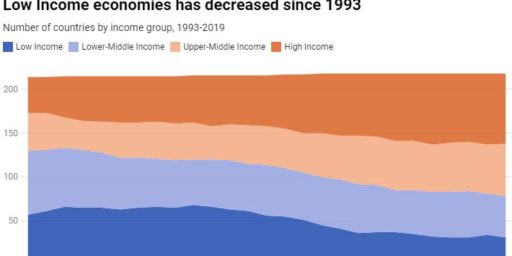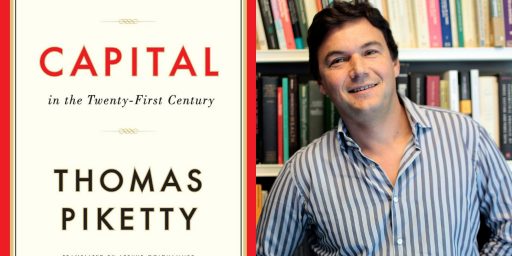Medieval England More Prosperous Than Today’s Poorest Nations
When you consider the vast technological, social, cultural, and economic changes that have occurred over the past 650 years or so, this is pretty astounding:
In a paper entitled British Economic Growth 1270-1870 published by the University of Warwick’s Centre on Competitive Advantage in the Global Economy (CAGE) the researchers find that living standards in medieval England were far above the “bare bones subsistence” experience of people in many of today’s poor countries.
The figure of $400 annually (as expressed in 1990 international dollars) is commonly is used as a measure of “bare bones subsistence” and was previously believed to be the average income in England in the middle ages.
However the University of Warwick led researchers found that English per capita incomes in the late Middle Ages were actually of the order of $1,000 (again as expressed in 1990 dollars). Even on the eve of the Black Death, which first struck in 1348/49, the researchers found per capita incomes in England of more than $800 using the same 1990 dollar measure. Their estimates for other European countries also suggest late medieval living standards well above $400.
Now, let’s look at comparable per capita income figures for a few modern nations:
- Zaire $249
- Burundi $479
- Niger $514
- Central African Republic $536
- Comoro Islands $549
- Togo $606
- Guinea Bissau $617
- Guinea $628
- Sierra Leone $686
- Haiti at $686
- Chad $706
- Zimbabwe $779
- Afghanistan $869
And I think it’s fair to say that many people in these nations don’t have a quality of life that’s all that different from the people of 1300’s England. I’m not sure whether these figures say more about the unexpected prosperity of an era we typically think of being nasty and brutish, or about the nation’s that don’t compare favorable to a society that existed six centuries ago.
H/T: Andrew Sullivan





The more interesting part of that same article is that the findings cast some doubt over a prevailing narrative about national wealth and modernity. England’s wealth didn’t suddenly start in the 18th century with the Industrial Revolution. Rather England’s Industrial Revolution was a product of its wealth which was evident half a millennium before.
I think it would be unsurprising to anyone who had read Guns, Germs, and Steel.
The humans in the fertile band from Europe through Asia enjoyed many benefits. Lots of useful crops, no tsetse file
(We could probably add Mayans and Egyptian pyramid builders to “better than the worst-off today.”)
I object on the grounds that this study contradicts Monty Python’s entire body of work on the middle ages.
http://www.youtube.com/watch?v=5Xd_zkMEgkI
That’s been known for a while, although this just shows how far back it goes. Even before the Industrial Revolution, per capita income in 17th and 18th century England (and particularly London) was pretty high for that time period. Same goes for the Netherlands.
The effect of climate on this should be noted:
Environmental History Resources: Middle Ages, 500 – 1500 CE